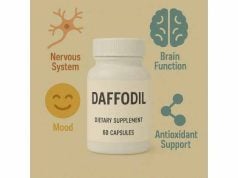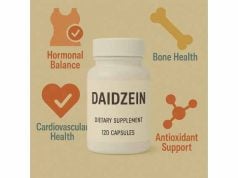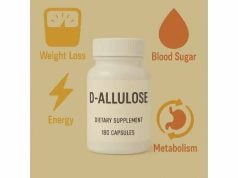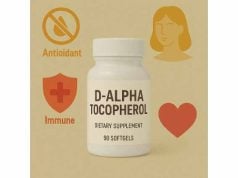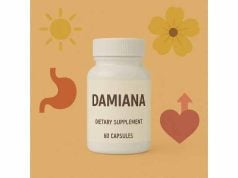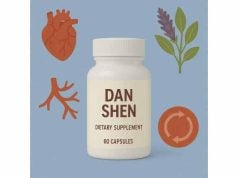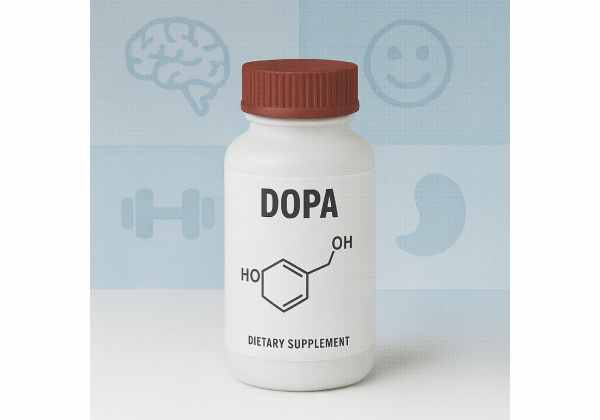
DOPA most often refers to L-DOPA, the direct biochemical precursor to dopamine. In clinics, L-DOPA is prescribed as levodopa (usually paired with carbidopa) to reduce Parkinson’s motor symptoms such as slowness and rigidity. In the supplement aisle, “DOPA” usually means L-DOPA concentrated from Mucuna pruriens (velvet bean). While both provide the same active molecule, they differ greatly in purity, dosing, and safety oversight. This guide translates the science into practical, people-first advice: what L-DOPA can and cannot do, how it works in the body, how clinicians dose it, what to know about food interactions, and which risks matter in day-to-day life. If you are living with Parkinson’s disease—or you are simply curious about Mucuna pruriens—this article will help you navigate benefits, dosing, and safety with clear, evidence-based guardrails.
Essential Insights for DOPA Users
- Most consistent benefit: improved motor symptoms in Parkinson’s disease with clinician-guided levodopa.
- Mucuna pruriens products can vary widely in actual L-DOPA per serving; quality matters.
- Typical clinical starts: carbidopa/levodopa 25/100 mg three times daily, titrated by a clinician.
- Safety caveat: do not combine with nonselective MAO inhibitors; avoid if you have narrow-angle glaucoma.
- Best to avoid: self-treating Parkinson’s disease, pregnancy or nursing without medical advice, and use in psychosis.
Table of Contents
- What is DOPA and how it works
- What benefits are supported in humans
- How to use DOPA safely day to day
- Dosage: how much and when
- Side effects, interactions, who should avoid
- Evidence: what we know and gaps
What is DOPA and how it works
When people say “DOPA,” they almost always mean L-DOPA (L-3,4-dihydroxyphenylalanine). It is a naturally occurring amino-acid–like compound that the body converts into dopamine with the enzyme aromatic L-amino acid decarboxylase (AADC). Because dopamine itself cannot cross the blood–brain barrier, L-DOPA is used to raise brain dopamine levels where it is needed most—especially in the motor circuits affected in Parkinson’s disease.
In medical care, L-DOPA is the active ingredient in levodopa. It is commonly paired with carbidopa (a “decarboxylase inhibitor”). Carbidopa acts in the body—not the brain—to block premature conversion of L-DOPA to dopamine. That pairing serves two purposes: more L-DOPA survives the trip to the brain, and fewer peripheral side effects (like nausea) occur. In some countries benserazide is used instead of carbidopa, but the logic is the same: spare L-DOPA until it crosses into the brain, then let neurons make dopamine where it helps movement.
In the supplement world, “DOPA” more often refers to L-DOPA concentrated from Mucuna pruriens seeds. Those seeds naturally contain L-DOPA (typically a few percent by weight), and extracts are often labeled as “standardized” to a given percentage. That said, independent testing has shown that U.S. supplements can vary widely in actual L-DOPA delivered per serving. With supplements, you are also getting L-DOPA without carbidopa; this can change how much reaches the brain and which side effects you feel.
Mechanistically, timing and food matter. L-DOPA shares transport pathways with large neutral amino acids (like leucine and phenylalanine) in the gut and at the blood–brain barrier. Protein-heavy meals can therefore compete with L-DOPA for absorption and brain entry. Many clinicians recommend taking immediate-release levodopa on an empty stomach (about 20–30 minutes before, or 1–2 hours after, meals), or shifting most dietary protein to later in the day if motor fluctuations are a problem. These choices aim to improve the consistency of benefit you feel from each dose.
Finally, keep the labels straight: dopamine is the neurotransmitter; L-DOPA is its precursor; levodopa is the medicine that contains L-DOPA; carbidopa is the helper that improves tolerability and delivery. Mucuna pruriens extract provides L-DOPA but lacks the built-in safeguards of prescription combinations.
What benefits are supported in humans
The most established, clinically meaningful benefit of L-DOPA is improvement in motor symptoms of Parkinson’s disease. Across decades of randomized trials and guideline assessments, levodopa remains the most effective single therapy for bradykinesia (slowness), rigidity, and—in many people—tremor. Benefits are usually noticeable within days to weeks of titrating to an effective dose. Because the disease involves progressive loss of dopaminergic neurons, the brain’s responsiveness can change over time; doses and schedules are often adjusted to maintain benefit while minimizing side effects.
How does this translate to real outcomes? People commonly report faster movement initiation, better dexterity (buttoning, handwriting), and more fluid walking. Early in therapy, many can return to tasks that had slowly become difficult: tying shoes, cooking, typing, or driving short distances. Quality-of-life measures typically improve as a result of better motor control. In advanced disease, levodopa still helps, but fluctuations (“on–off” periods) and dyskinesias (involuntary movements) may become more prominent; clinicians then combine strategies—adjusting dose timing, adding COMT or MAO-B inhibitors, or using controlled-release or infusion formulations—to smooth response.
What about Mucuna pruriens? Small but notable trials comparing Mucuna seed powder to standard levodopa/carbidopa have suggested a faster onset of action and longer “on” time in some participants, likely because of high L-DOPA content. However, most Mucuna products are not standardized like prescription medicines, and batch-to-batch variability is real. This variability makes it difficult to predict your response from a supplement label alone. If you decide to try Mucuna under medical supervision, use a product with third-party testing and keep a dose diary to track onset, duration, and side effects.
Outside of Parkinson’s, claims get thinner. For “focus,” “motivation,” or “exercise performance,” evidence in healthy adults is sparse to nonexistent. L-DOPA is a potent central nervous system–active molecule with meaningful risks; using it for general wellness is not recommended. For restless legs syndrome, levodopa is sometimes used intermittently, but daily use risks “augmentation” (worsening of symptoms), and other drug classes are often preferred. If a supplement promises broad mood or performance effects from “DOPA,” approach with skepticism and consult a clinician if you take any medications that act on dopamine or serotonin pathways.
Bottom line: for Parkinson’s motor symptoms, levodopa is a mainstay, with robust human evidence and guideline support. For Mucuna supplements, the active molecule is the same, but product consistency and the absence of carbidopa make results less predictable—and self-treating Parkinson’s disease with supplements alone is not advisable.
How to use DOPA safely day to day
If you have Parkinson’s disease or parkinsonism, the safest path is prescription levodopa under clinician care. Your team will individualize the dose, decide whether immediate-release, extended-release, or combination products fit your day, and help you navigate “on” time versus side effects. They will also look for interacting drugs (for example, dopamine-blocking antipsychotics) and medical conditions (like narrow-angle glaucoma) that change the risk–benefit balance.
If you are considering Mucuna pruriens for any reason, a few practical steps can reduce risk:
- Choose quality first. Favor brands with transparent certificates of analysis and third-party testing. Studies have found U.S. Mucuna products delivering anywhere from just a few milligrams to well over 200 mg of actual L-DOPA per serving—far from the label in some cases. That variability can make the first “test” dose feel surprisingly strong.
- Start low, log carefully. Because Mucuna lacks carbidopa, side effects such as nausea, dizziness, palpitations, or blood-pressure drops can appear at lower doses than expected. If a clinician agrees you can try a small dose, record the time you take it, when you first notice effects, when they fade, and any adverse symptoms. Do not layer Mucuna on top of prescription levodopa without explicit guidance; that is a setup for excessive dopaminergic stimulation.
- Mind meals. For immediate-release levodopa, many clinicians recommend taking doses 20–30 minutes before—or 1–2 hours after—meals, especially high-protein meals. Protein competes with L-DOPA for shared transporters in the gut and at the blood–brain barrier, often blunting or delaying benefit. If breakfast is protein-heavy, consider shifting it later, or take levodopa before breakfast if tolerated.
- Watch iron and supplement stacks. Iron salts (in multivitamins or standalone iron) can chelate levodopa and reduce its absorption. Separate these by several hours. Be cautious with other “neuro” supplements: 5-HTP, tyrosine, phenylalanine, and high-dose vitamin B6 can all shift monoamine pathways. B6 accelerates peripheral decarboxylation of levodopa if you are not taking carbidopa.
- Respect red-flag combinations. Do not combine L-DOPA with nonselective MAO inhibitors (e.g., phenelzine, tranylcypromine); the risk of dangerous hypertensive reactions is real. If you take a selective MAO-B inhibitor, your clinician will guide safe dosing. Many antipsychotics and antiemetics that block dopamine receptors can also blunt levodopa’s effect.
- Plan for real-life risks. Somnolence and sudden sleep attacks can occur on dopaminergic drugs. Until you know your response, avoid driving or operating machinery. If you ever need surgery or cannot take oral meds, ask your team how to continue therapy to avoid withdrawal states resembling neuroleptic malignant syndrome.
These day-to-day choices—quality sourcing, meal timing, spacing other supplements, and avoiding risky combinations—will not replace medical guidance, but they can make your regimen safer and more predictable.
Dosage: how much and when
There is no single “right” dose of L-DOPA: it is individualized to your symptoms, schedule, and side-effect tolerance.
Clinical dosing (prescription levodopa/carbidopa). A common starting plan is one tablet of carbidopa/levodopa 25/100 mg three times daily. Clinicians then adjust—often by one tablet every day or every other day—until benefit is satisfactory or side effects appear. Many people need at least 70–100 mg/day of carbidopa to control nausea from peripheral conversion. Over time, daily levodopa needs can range from about 300 mg to well above 600 mg, split across 3–6 doses (or covered by extended-release or infusion formulations). Dose timing can be just as important as total daily milligrams: smaller, more frequent doses may smooth wearing-off; protein redistribution (eating most protein later in the day) can also help some people get more reliable “on” time.
Supplement dosing (Mucuna pruriens products). There is no universally accepted “supplement dose” of L-DOPA for wellness, and self-treating Parkinson’s disease with Mucuna in place of prescription levodopa is risky. To understand labels, note that an extract “standardized to 15% L-DOPA” means a 500 mg capsule should contain ~75 mg of L-DOPA; a 99% L-DOPA extract labeled at 250 mg would deliver ~247.5 mg. Unfortunately, independent testing shows real-world products do not always match that math; some capsules contain only a few milligrams, while others exceed 200 mg of L-DOPA per serving. Without carbidopa, smaller amounts may feel stronger in the body (and may cause nausea or palpitations). If a clinician approves a cautious trial for a non-Parkinson’s indication, the safest approach is to use the lowest available L-DOPA amount, separated from high-protein meals, and to stop if side effects occur.
With meals or empty stomach? Immediate-release levodopa is usually best on an empty stomach (20–30 minutes before food, or 1–2 hours after), because dietary amino acids compete with L-DOPA for absorption and transport to the brain. If nausea limits empty-stomach dosing, a small non-protein snack (dry toast, crackers, fruit) sometimes helps. Extended-release formulations can be less sensitive to timing, but clinicians still consider protein effects when troubleshooting fluctuations.
Special cases. People with pronounced morning “off” time may take the first dose upon waking and delay breakfast. Those with advanced disease may need combinations (COMT inhibitors, MAO-B inhibitors) or delivery systems (apomorphine rescue, levodopa gel infusions) to stabilize response. These are specialist decisions; do not attempt to mimic them with supplements.
Do not combine regimens on your own. Adding Mucuna on top of prescription levodopa can overshoot dopamine signaling and increase dyskinesias, hallucinations, blood-pressure swings, or impulse-control problems. Any combination should be supervised by your clinician.
Side effects, interactions, who should avoid
Common side effects. Nausea, dizziness, somnolence, headache, and orthostatic hypotension (lightheadedness when standing) are common, especially without sufficient carbidopa. Over months to years, some people develop dyskinesias (involuntary movements), which correlate with cumulative levodopa exposure and disease progression. Older adults may be more prone to confusion or hallucinations. Darkening of urine or sweat (red-brown) is benign but surprising.
Serious or urgent issues. Sudden sleep attacks can lead to accidents; do not drive until you know your response. Abrupt dose reduction or interruption can trigger a dangerous “parkinsonism-hyperpyrexia” syndrome (akin to neuroleptic malignant syndrome) with rigidity, fever, and confusion—seek urgent care if this occurs. Rare impulse-control disorders (gambling, hypersexuality, compulsive spending) can emerge with dopamine-increasing therapies; tell your clinician promptly if urges change.
Key interactions.
- Nonselective MAO inhibitors (phenelzine, tranylcypromine): contraindicated with levodopa due to risk of severe hypertension. A two-week washout is typically required when switching.
- Selective MAO-B inhibitors (selegiline, rasagiline, safinamide): may be used with levodopa; clinicians monitor for orthostatic hypotension.
- High-protein meals: can reduce or delay effect by competing for transporters. Consider timing doses away from protein or using a protein-redistribution plan if advised.
- Iron salts: can chelate levodopa and carbidopa; separate dosing by several hours.
- Vitamin B6 (pyridoxine): high doses can increase peripheral conversion of levodopa when carbidopa is not used (relevant to Mucuna users), potentially reducing benefit and increasing side effects.
- Dopamine-blocking drugs (e.g., certain antipsychotics like risperidone; some antiemetics like metoclopramide): can blunt levodopa’s therapeutic effect.
- Antihypertensives: blood-pressure–lowering effects may be additive, increasing orthostatic symptoms.
Who should avoid or use only with specialist input.
- People taking nonselective MAO inhibitors.
- Those with narrow-angle glaucoma.
- Individuals with active psychosis or uncontrolled hallucinations.
- Pregnant or nursing people (safety data are limited; levodopa appears in breast milk and crosses the placenta).
- Children and adolescents (safety and efficacy are not established for routine use).
- Anyone with significant cardiac arrhythmias or a recent myocardial infarction should be monitored closely if levodopa is used.
Supplements deserve a special note: because Mucuna pruriens products vary in L-DOPA content, first-dose reactions can be unexpectedly strong. If you take Mucuna and experience palpitations, severe nausea, confusion, or unusual urges or dreams, stop the product and contact a clinician.
Evidence: what we know and gaps
Strong evidence (what we know). Clinical guidelines continue to place levodopa at the center of Parkinson’s motor symptom management. It is the most effective agent for bradykinesia and rigidity, and it improves patient-reported outcomes when titrated thoughtfully. The foundational pharmacology—L-DOPA crossing the blood–brain barrier, local conversion to dopamine, and carbidopa reducing peripheral conversion—has been validated for decades. Practical diet strategies (time doses away from protein; consider protein redistribution when fluctuations dominate) have mechanistic support and real-world utility, although not every person benefits the same way.
Moderate evidence (what is promising but nuanced). Mucuna pruriens seed preparations can deliver clinically meaningful L-DOPA and, in small crossover trials, sometimes provide faster onset and longer “on” time than standard combinations. That said, the absence of carbidopa, differences in L-DOPA content across batches, and the lack of long-term safety and augmentation data make supplements inferior to supervised prescription regimens. Dietary manipulations (low-protein or protein-redistribution diets) help some but not all; tailoring by symptoms, weight, and meal patterns works better than a one-size-fits-all rule.
Evidence gaps and ongoing questions.
- Quality control in supplements. Independent testing shows large discrepancies between labeled and actual L-DOPA content in U.S. Mucuna products. Standardized quality frameworks and transparent third-party testing would meaningfully improve safety.
- Long-term supplement outcomes. We lack robust, long-duration trials on Mucuna pruriens as a primary therapy. Questions include long-term dyskinesia rates, augmentation, neuropsychiatric effects, and interactions with common co-medications.
- Personalized nutrition. We need better ways to predict who will benefit from protein redistribution (biomarkers, practical algorithms) and how to minimize unintended weight loss or nutritional trade-offs while optimizing levodopa response.
- Sex, body size, and pharmacokinetics. Emerging work suggests women may have higher levodopa exposure at the same mg/kg dose, with implications for dyskinesia risk; personalized titration and education could improve outcomes.
Practical takeaway. For Parkinson’s disease, prescription levodopa—guided by a clinician—is still the clearest path to better movement. Mucuna may be considered in special contexts, but variability and lack of carbidopa complicate consistent benefit. Everyday choices such as dose timing, meal composition, and avoiding interacting drugs often make the difference between a frustrating regimen and one that reliably helps.
References
- Dopaminergic Therapy for Motor Symptoms in Early Parkinson Disease Practice Guideline Summary: A Report of the AAN Guideline Subcommittee 2021 (Guideline)
- DailyMed – CARBIDOPA AND LEVODOPA tablet (Label)
- Levodopa (L-Dopa) 2023
- Levodopa Content of Mucuna pruriens Supplements in the United States 2022
- Mucuna pruriens in Parkinson’s disease: a double blind clinical and pharmacological study 2004 (RCT)
Disclaimer
This article is for general information and education. It is not medical advice and does not replace diagnosis, counseling, or treatment from a qualified healthcare professional. Do not start, stop, or change any prescription or supplement—especially L-DOPA or Mucuna pruriens—without guidance from your clinician, particularly if you have Parkinson’s disease or take medicines that affect blood pressure, mood, or dopamine signaling. If you are pregnant, nursing, or have narrow-angle glaucoma, psychosis, significant heart rhythm problems, or take nonselective MAO inhibitors, consult a clinician before using any DOPA-containing product.
If you found this helpful, please consider sharing it with a friend or on Facebook, X, or your preferred platform, and follow us for future guides. Your support helps us continue creating evidence-based, reader-friendly health content.

